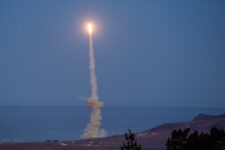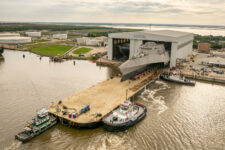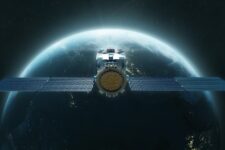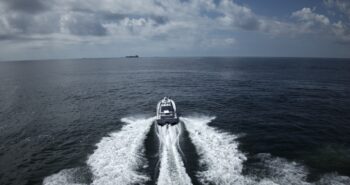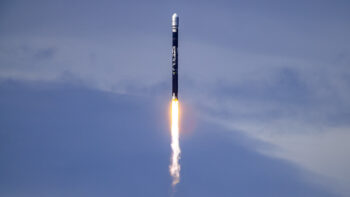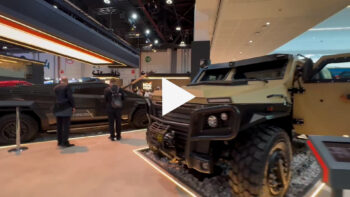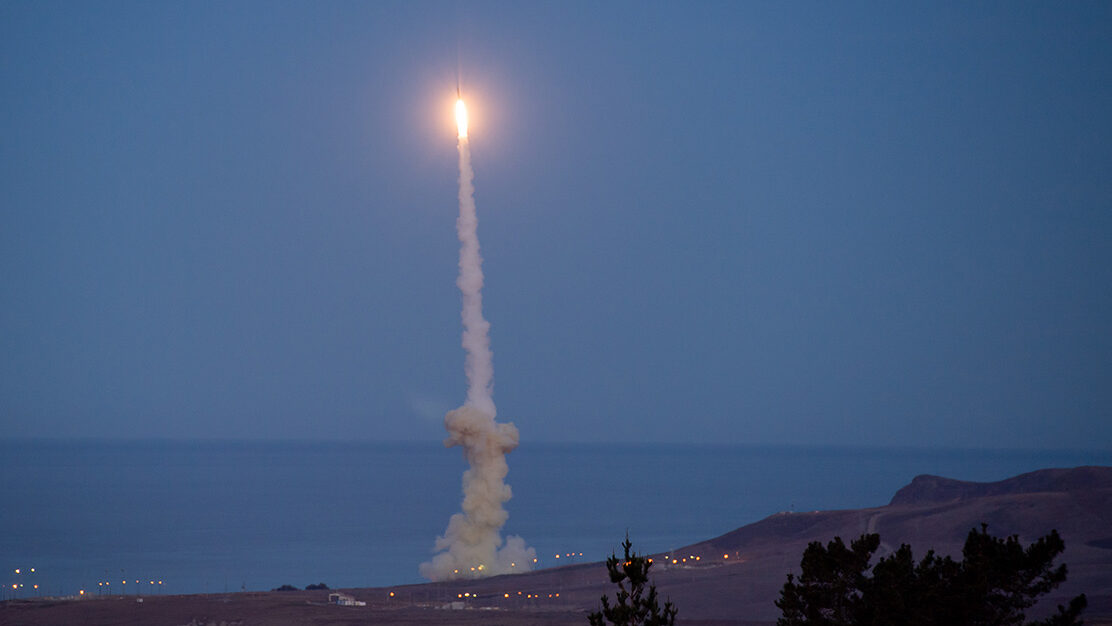
An upgraded Ground Based Interceptor with a Capability Enhanced-II Block 1 Exo-Atmospheric Kill Vehicle (EKV) is launched from Vandenberg Space Force Base, California, during Flight Test Ground-based Midcourse Defense Weapon System-12, or FTG-12, on December 11, 2023
WASHINGTON — To make President Donald Trump’s vision of an Iron Dome missile shield for the United States a reality, the Defense Department should focus first on fielding a multi-layer sensor architecture with systems proliferated “from seabed to space” and capable of tracking threats at greater distances, the head of US Northern Command said today.
“The top priority in our efforts to meet the direction of the [Iron Dome for America] executive order is first and foremost to establish increased domain awareness,” Gen. Gregory Guillot, who also leads North American Aerospace Defense Command (NORAD), said during a Senate Armed Services Committee hearing. “You can’t defeat what you can’t see, and the adversaries have an increasing capability of reaching us and threatening us from ranges beyond what some of our current systems can detect and track.”
That architecture would include space and ground-based sensors, air-based assets like the E-7 Wedgetail, and other sensing nodes on the bottom of the sea, all of which could provide enhanced missile detection, tracking and warning capabilities, he said.
“Some of those capabilities are right on the edge,” Guillot said. “Others are probably three to five years out, but I think within sight of a year we could have a significant capability that could network those into a single sensing grid.”
Trump made an “Iron Dome for America” a major campaign priority, promising to build “a dome like has never seen before, a state-of-the-art missile defense shield that will be entirely built in America.” Just a week after taking office, he released a Jan. 27 executive order that gives the Pentagon 60 days to develop a plan to defeat “ballistic, hypersonic, advanced cruise missiles, and other next-generation aerial attacks from peer, near-peer, and rogue adversaries.”
Since then, the department has been racing to figure out how to develop and deploy the missile shield —which will comprise current capabilities and emerging technologies — as well as how to fund a project that experts have said will be both costly and technologically challenging.
The Missile Defense Agency last week issued a request for information on technologies that could be incorporated into the Iron Dome. The RFI seeks capabilities that could be fielded in two-year increments until 2030, as well as long-term ideas that would become operational afterwards.
On Monday, the Space Development released its own solicitation, asking industry for suggestions on how the agency’s Proliferated Warfighter Space Architecture (PWSA) satellite network could support a US-based Iron Dome.
Beyond increased sensing capabilities, Guillot told lawmakers the Iron Dome effort should build on existing ground-based interceptors and next-generation interceptors built to defeat intercontinental ballistic missiles. It’s also “imperative” that the Pentagon expands space-based capabilities for tracking hypersonic missiles, such as the Hypersonic and Ballistic Tracking Space Sensor (HBTSS), he added later during the hearing.
Improving the detection of threats is increasingly important given the heightened levels of Chinese and Russian activity near the US homeland, as well deepening cooperation between the two nations, such as an instance when Chinese and Russian bombers flew a combined patrol near Alaska last summer, said Guillot, adding that he expects to see such activities increase across the air, maritime and undersea domains.
“What I worry about the most is that — instead of just weapons and technology — that they will trade access, which would shorten our timelines to react to either country’s military capabilities,” Guillot said.
Asked what technology would be most critical for mitigating that threat, he once again pointed to the need for better threat detection.
“The most important capability we would need is the improved domain awareness to allow us to see at further ranges. As military capabilities improve by our adversaries, we have to match that with our detection capability,” he said.

